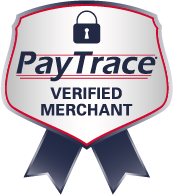Social media has created great channels for business promotion, and at virtually no cost. Most social platforms have very crude strategies for generating funds through advertising. Facebook has led the pack in terms of generating revenues off of an advertising system, and it has quickly generated huge sums of money, with annual earnings exploding into the hundreds of millions.
And yet, most businesses eschew ad spending entirely and squeeze value out of Facebook without putting any money down. It’s long been a great strategy for reaching a digital audience, but this opportunity is changing–and eventually, it will disappear. Even though you can still get results from Facebook for free, there are some great reasons why it’s time to start paying.
Facebook Organic Reach is Declining
Reaching your audience through Facebook may be free, but it’s much more restricted than it once was. Currently, brands enjoy only a six percent reach on any piece of content they post. This means that if you post a status update to your audience of 1,000 Facebook followers, only about 60 of them will ever see that content.
That’s a big change from years past, and it illustrates Facebook’s long-term goals: The company wants to wean brands off of free self-promotion and convince them to instead pay for the results it once dispensed pro bono. Fair or not, this is the company’s primary strategy, and the change is inevitable. In the not-too-distant future, brands will be able to post all they want on Facebook–but without paying to promote their posts, hardly anyone will ever see the content.
The Facebook Display Network is Huge
The upside is that Facebook’s advertising audience is massive: More than one billion users are regularly active on the site. A big potential audience means that companies can add numerous filters onto their promoted posts that limit who sees the content. When utilized correctly, brands can ensure that their paid posts are only seen by the most relevant consumers.
If you choose to pay for a high volume of exposure, you will quickly find that a single post can be seen by tens of thousands of users, if not more. These users can then choose to follow your brand, which creates additional viral potential. Promoted Facebook posts, in other words, can directly increase the value of your organic results. As far as digital marketing goes, only Google paid search offers a larger potential audience.
Paid Search Does Not Come at the Cost of Organic Sharing
Eventually, businesses will get no organic exposure from their Facebook pages. But that’s not the case yet, as many companies are eager to point out. As far as the immediate future is concerned, it’s still possible to get exposure and enjoy the benefits of viral sharing without giving Facebook a dime. So why bother with spending money on ads?
The reason is simple: Paid advertising does not impact your organic exposure in any way. When you purchase promoted posting space on Facebook, you’re reaching people that otherwise might never discover your brand. And if those consumers choose to follow your Facebook page, you’ll enjoy a modest bump in organic reach for as long as Facebook makes this available.
The future is tough to predict, particularly when Facebook is cryptic about its future plans. But they seem to be pretty clear on one thing: sponsored posts will be a necessary expense for businesses within the next few years. By adopting this campaign strategy now, you can get ahead of the game and build a healthy lead in brand reach and engagement. Contact DBC Digital today to take advantage of this opportunity.
Greg Sherwood is CEO of DBC Digital, a marketing agency based in Denver, Colorado. With over 30 years of marketing experience with traditional and inbound (internet) marketing, Greg helps mid-sized businesses get a better return on their marketing dollars.
You can reach Greg at (303) 357-5757 or at dbc@dbcdigital.com







